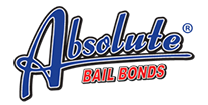
Safe and Sane vs Dangerous Fireworks
Did you know that California actually has two different categories of fireworks?
The first category of fireworks and the one everyone would prefer that you work with is referred to as “safe and sane fireworks.” Most of us are perfectly happy using safe and sane fireworks. These are the simple yet satisfying light shows that you can put on in your own backyard. They include things like snap caps, sparklers, small little rockets that only travel a few feet into the sky, fountains, and spinners. The simple things that pretty much anyone can figure out how to operate safely.
Dangerous fireworks are more complicated. These are the fireworks that create the bigger light show. Lawmakers consider fireworks that exceed ten inches in length and a quarter-inch in diameter to be dangerous. More importantly, they’re illegal.
While safe and sane fireworks are perfectly legal for you to purchase and use in the comfort of your own backyard, they’re still heavily restricted. To sell safe and sane fireworks, vendors must be properly licensed. They are also only allowed to sell the fireworks from June 28th through July 6. If you want to purchase the safe and sane fireworks, you’ll need to get to the store as close to that June 28th date as possible. Anyone who can’t prove that they are at least 16 years old will not be allowed to purchase the fireworks.
When it comes to what lawmakers consider dangerous fireworks, you shouldn’t have them at all. It’s illegal for you to have dangerous fireworks.
If you’re caught with a large number of dangerous fireworks, you’ll face serious legal ramifications. The large quantity of fireworks means you’re facing felony charges. If convicted, the maximum sentence is three years in a state prison and/or a $50,000 fine.
If you plan on purchasing and setting off any fireworks this season, you first need to check your local government ordinances. Some cities and counties, have banned even the types of fireworks the state considers to be safe and sane. Before lighting up your small stash of safe and sane fireworks, make sure you’re not about to break any local ordinances that could result in misdemeanor charges.
Your local fire department will be able to provide you with detailed information about local firework laws and restrictions.
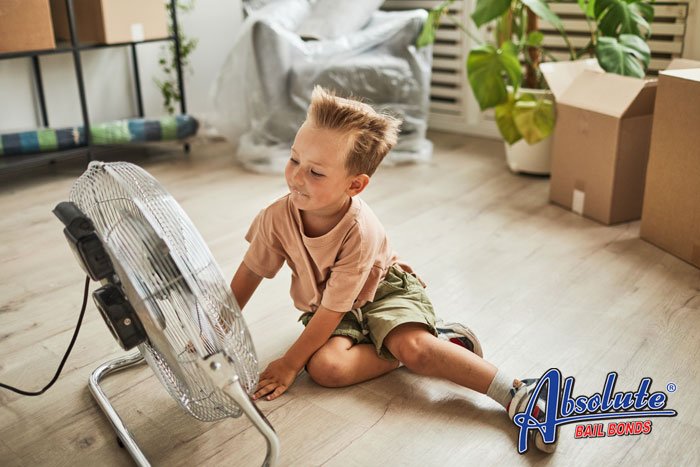
Conserving Electricity This Summer
Since May, various people have expressed concern that the power grid won’t be able to provide enough electricity to meet everyone’s needs. According to a May 6, 2022 article that was posted by CBS Sacramento, the California Independent System Operator (Cal ISO) was already seriously concerned about whether supply would meet demand. At the time, it was predicted that the state’s power grid would be approximately 1,700 megawatts short.
There are a few different reasons why electricity is becoming increasingly difficult for Californians to use. The leading reasons that electricity is in short supply include wildfires that not only destroy many electrical resources but often put an additional strain on the grid. The drought makes it harder to find the water needed to create electricity. Last is the sheer demand people are placing on the state’s electrical system. As the days get hotter, people are using their air conditioning more frequently which drains electrical resources.
While you may not be able to completely spare the state from rolling black and brownouts this summer, there are a few things you can do that will limit the strain you place on the overtaxed system and also lower your monthly electricity bill.
Use Window Covering/Treatments
You will be amazed by the amount of money upgrading your window coverings/treatments saves you. Good quality window coverings/treatments are designed to significantly reduce the amount of heat that’s let into your house. The less heat that enters your home, the less you’ll pay to keep the interior air conditioning.
Consider Using a Fan
Switching the air conditioning off and turning a fan on is always a great way to conserve electricity, especially when you’re the only person home. Fans create a wind-chill effect as they circulate air around the room. Occasionally using a damp towel to moisten your skin will enhance the fan’s cooling properties.
Since the fan doesn’t actually cool your home but simply moves air around, you’ll want to shut it off whenever you leave the room. Continuing to allow it to run will simply drain your electrical supply for no good reason.
Invest in a New Thermostat
Believe it or not, the thermostat you’re using can have a major impact on your monthly utility bills. All you have to do is replace your traditional thermostat with an automated one that you can program to accommodate your family’s routine. Why is this important? It means that during the times when no one is home, the system will turn off your air conditioning and allow the internal temp of your home to rise a bit while you conserve energy by not running the A/C. Just before you’re scheduled to get home, the automated thermostat will turn the A/C on so you return to a cool and comfortable environment.
What steps have you taken to decrease your electricity use this summer?

Jaywalking in California
All of us have heard the term jaywalking, but few of us can say exactly what it is. According to the Legal Dictionary, the exact definition of jaywalking is the act of crossing a roadway when it is unlawful to do so. This includes crossing between intersections, as well as crossing at a crosswalk equipped with a signal, without waiting for the proper indication that it is safe to do so.
While jaywalking might not seem like a big deal, you should know that it’s prohibited in California. You can learn more about jaywalking in California by checking out 21955 VC, which makes it very clear that jaywalking is illegal in the state.
The law states that you’re not allowed to walk, “between adjacent intersections controlled by traffic control signal devices or by police officers, pedestrians shall not cross the roadway at any place except in a crosswalk.”
Even though jaywalking is illegal, the good news is that it’s an infraction, not a misdemeanor or felony. Not only won’t it go on a permanent criminal record that can negatively impact your ability to find housing or secure a job, but it also means you don’t have to worry about going to jail. The jaywalking incident will be no worse than getting pulled over for a minor driving mistake.
The bad news is that there are some substantial fines connected to jaywalking in California. Right off the bat, your jaywalking ticket will cost you $196 but there will also be administrative fees, processing fees, and other charges added to the ticket until it’s a substantial amount.
It is also worth noting that if you’re caught jaywalking, the police officer who witnessed the incident will ruin your record. If you have any bench warrants, they’ll have no choice but to arrest you.
The big concern everyone has regarding jaywalking is that someone could get hurt. If you’re decision to jaywalk results in an accident, you’ll likely have to defend yourself in a civil case.

Consequences of Reckless Burning in California
Finally, it’s summertime! Between the increased daylight hours and warmer weather, you’re finally able to do all of your favorite outdoor activities, including having your friends over for a bonfire.
Before you strike a match, you need to make sure you’ve taken the proper steps so that you don’t find yourself dealing with a reckless burning charge.
California’s Penal Code 452 PC exists exclusively for people who either start an illegal fire or who are reckless with fire. The law prohibits you from randomly setting fire to:
- Structures
- Property
- Forest land
The way the law is written, even if you don’t deliberately set fire to something, but simply have a campfire, you can still be charged with being reckless with fire if you fail to follow basic protocols and the fire gets out of control.
Penal Code 452 PC states:
“A person is guilty of unlawfully causing a fire when he recklessly sets fire to or burns or causes to be burned, any structure, forest land or property.
(a) Unlawfully causing a fire that causes great bodily injury is a felony punishable by imprisonment in the state prison for two, four, or six years, or by imprisonment in the county jail for not more than one year, or by a fine, or by both such imprisonment and fine.
(b) Unlawfully causing a fire that causes an inhabited structure or inhabited property to burn is a felony punishable by imprisonment in the state prison for two, three, or four years, or by imprisonment in the county jail for not more than one year, or by a fine, or by both such imprisonment and fine.
(c) Unlawfully causing a fire of a structure or forest land is a felony punishable by imprisonment in the state prison for 16 months, two or three years, or by imprisonment in the county jail for not more than six months, or by a fine, or by both such imprisonment and fine.
(d) Unlawfully causing a fire of property is a misdemeanor. For purposes of this paragraph, unlawfully causing a fire of property does not include one burning or causing to be burned his own personal property unless there is injury to another person or to another person’s structure, forest land or property.
(e) In the case of any person convicted of violating this section while confined in a state prison, prison road camp, prison forestry camp, or other prison camp or prison farm, or while confined in a county jail while serving a term of imprisonment for a felony or misdemeanor conviction, any sentence imposed shall be consecutive to the sentence for which the person was then confined.”
If you’re charged with basic reckless burning of personal property, you’re dealing with a misdemeanor crime. The maximum sentence is 6 months in a county jail and/or a $1,000 fine.
The situation goes from bad to worse if a building or forestland was impacted by your fire. When buildings and forest land are involved, reckless burning in California becomes a wobbler offense. At this point, it’s often referred to as reckless arson.
When you create a forest fire and are only charged with a misdemeanor, the maximum sentence you face is six months in a county jail and/or a $1,000 fine. However if the fire involved an inhabited structure or property, you face a felony charge which carries a sentence of 2, 3, or four years in a state prison.
If someone was injured as a result of your fire, the sentence can include up to six years in a state prison.
If you have any intention of lighting any type of fire this year, it’s in your best interest to be safety conscious and to have all of your safety equipment/tools on hand before you start burning.

Early Warning Signs of Heat Stroke
The longer, warmer days inspire all of us to spend more time outdoors. The problem is that the hotter it gets, the greater the risk of heatstroke.
The problem many people discover is that while there are warning signs that they’re starting to overheat, most either ignore these signs or fail to recognize them for what they are until it’s too late. Make this the year that you sit down and familiarize yourself with the early warning signs of heatstroke. You’ll find that knowing when you’re overheating improves your overall health and how much you enjoy the summer months.
Headaches are often the first sign that you’ve been out in the sun and heat too long. They can also be a sign of dehydration so going indoors and drinking a tall glass of cold water as soon as your head starts to throb can solve both issues before they become serious health concerns.
Keeping a mirror tucked into your pocket while you’re outside isn’t a bad idea. You can use it to keep an eye on your complexion. If you notice you’re becoming flushed, you should either get inside or at least to a nice shady patch so you can cool down a bit.
If your skin feels hot, tight, and dry, you immediately need to take steps to cool down. The fact that you feel hot but aren’t sweating isn’t a good sign. The longer you ignore the state of your skin, the greater the risk of you developing full-blown heat stroke.
Do you feel your pulse pounding in your throat or your heart hammering in your chest? This is often a sign that you’ve developed heatstroke. You need to immediately get out of the sun and start slowly cooling yourself down. If your heart rate doesn’t start to slow down after a few minutes, you’ll want to seek medical assistance.
The hotter you get, the more confused you’ll feel. Things like agitation, sudden irritation, delirium, and slurred speech are signs of advancing heat stroke. Seek medical attention.
Stay cool and healthy this summer!
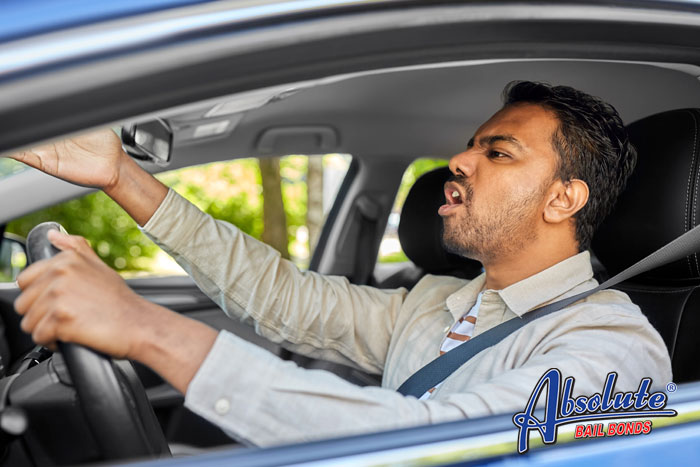
Avoiding Road Rage in California
Road rage is a serious problem and it doesn’t show signs of getting better. According to the American Automobile Association, approximately 200 murders and 12,000 deaths over seven years were linked to road rage incidents. The NHTSA reported that 66% of traffic fatalities were the direct result of aggressive driving and road rage. The Zebra conducted a study in 2019 that revealed that 82% of drivers committed an act of road rage.
While you may not be able to avoid road rage altogether, there are some things you can do to reduce the number of road rage incidents you’re linked to.
Avoid driving when you’re already on edge.
The more irritated you are when you slide behind the wheel, the greater the odds are that you’ll experience road rage during your commute. Try to calm yourself down before driving. Once you’re on the road, take deep breaths and listen to soothing music or an uplifting podcast.
Give yourself plenty of time to reach your destination. The tighter you are on time, the more recklessly you’ll drive and the more irritated you’ll be at other drivers. Giving yourself a good amount of time to safely reach your destination is one of the best ways to avoid road rage incidents.
Carefully choose your route before you leave. If you know you’re already irritated, choose a route that has the least amount of traffic on it. The fewer cars you encounter on your drive, the more relaxed you’ll be.
Let things go while you’re driving. There will be days when things happen that irritate you. Rather than letting them get under your skin and prompt you into doing something you’ll regret. Take lots of deep breaths, practice defensive driving techniques, and focus on all the good things that are happening around you.
When you encounter an angry driver, don’t engage with them. Stay defensive and let them go ahead of you. Don’t match their aggressive behavior with aggressive moves of your own.

Providing False Credit Card Information
There are times when we could all use a little extra money. Adding an additional line of credit to our lives seems like a good way to get it. The problem is that if you’re already overstretched, the credit card companies will likely reject your application. This can prompt some of us to consider providing false credit card information.
Before you start to provide someone with false credit card information you should know about Penal Code 484f PC. This is the law that outlines the consequences of providing false credit card information in California.
The law states: “(a) Every person who, with the intent to defraud, designs, makes, alters, or embosses a counterfeit access card or utters or otherwise attempts to use a counterfeit access card is guilty of forgery.
(b) A person other than the cardholder or a person authorized by him or her who, with the intent to defraud, signs the name of another or of a fictitious person to an access card, sales slip, sales draft, or instrument for the payment of money which evidences an access card transaction, is guilty of forgery.”
If you think providing false credit card information is something that only happens when people lie on credit card applications, you’re wrong. While there are lots of people who do lie when they apply for credit cards, there are many different ways a person can violate the law.
Examples of providing false credit card information include:
- Creating fake debit/credit cards
- Using a friend/family member’s credit card without first getting their permission
- Providing a store with a fake credit card number
- Doing something to alter the numbers on a credit/debit card
Providing false credit card information is a wobbler offense. The circumstances surrounding the incident and the amount of money involved are used to determine if you’ll be charged with a misdemeanor or a felony. If you’re convicted of misdemeanor falsifying credit card information, the maximum sentence is one year in jail and restitution. In felony cases, the maximum sentence is three years in prison.
In most cases, providing false credit card information is just one of the charges you’ll have hanging over your head. Additional charges usually connected to this type of crime usually include forgery, petty theft, stealing a credit card, etc.
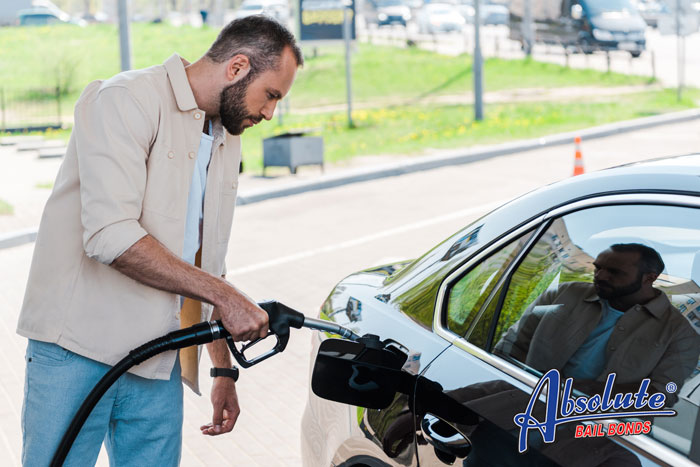
5 Things You Can Do to Save Gas While Driving
Gas prices have hit historical highs and it doesn’t seem like we’re going to get much relief this summer. While there isn’t anything you can do that will lower the cost per gallon, you can alter your driving habits so that you get the maximum amount of mileage from each gallon you put into your vehicle.
Slow Down
Driving slow isn’t as much fun as zipping along, but it will significantly improve your vehicle’s fuel economy. The slower you go, the less drag your vehicle encounters, and the more miles you get per gallon.
Brake Smoothly
There are times when you can’t avoid slamming on your brakes, but whenever you have the chance, try to brake as smoothly as possible. Also, try letting the weight of your vehicle aid with its slowing down rather than riding your brakes. In addition to improving your fuel economy, the smoother braking style will also lengthen the lifespan of your brakes.
Let Your Cruise Control Handle your Acceleration
We’ve gotten into the habit of mashing the accelerator all the way to the floorboards when we accelerate. Now is a good time to stop this practice. The first thing you need to do is carefully chose the times you pull into traffic and wait for a break that allows you to gradually accelerate. You should also allow your cruise control to handle the acceleration since it will handle it far more smoothly, which ultimately reduces your gas usage.
Stop Idling
Instead of letting your car idle while you wait for your kids to get out of school or as you run back into your home for some forgotten item, shut your engine off. The longer your car idles, the more fuel it burns while doing absolutely nothing.
Pre-plan Your Stops
Before leaving home for the day, stop and think about the various errands you’re going to run. Rather than driving to every single location, look for ways you can park your car and leave it. You won’t believe how much fuel you save when you stop driving to every single store. If the distance between two stops is further than you want to walk, consider using public transportation, a bike, or renting an electric scooter. Leaving your car parked in one location while you run errands in multiple places may take longer, but it will also save you a significant amount of money.
What methods are you using to reduce your overall fuel usage?

Are DUI Sobriety Checkpoints Legal in California?
No one likes DUI checkpoints. Not only do they make many of us nervous, even when we haven’t been drinking. There’s just something about getting caught in a checkpoint and seeing a police officer walking towards us that tends to activate a guilt complex, they also drastically extend the length of time it takes you to get from Point A to Point B.
As irritated as you might be that you were caught at a DUI checkpoint, you shouldn’t expect the state to stop using them anytime soon. The purpose of the checkpoints is to reduce the annual number of deaths and injuries that are the direct result of drunk driving incidents. As long as the checkpoints continue to catch drunk drivers, they will remain an issue you’ll have to deal with when driving in California.
Many people have protested that DUI checkpoints are illegal, that they’re a form of entrapment. The issue has even made it all the way to both the California and Federal Supreme Courts, who ruled that the checkpoints were legal. There are some rules that they must follow when the highway patrol sets up a California DUI checkpoint. These rules include:
- Arranging things so only the supervising officers are in charge of operational decisions;
- Establishing a completely neutral criteria for drawing motorists into the checkpoint.
- Making sure the checkpoint is set up in a location where the supervising officers can reasonably expect drunk drivers to pass-through
- The checkpoint is safe and all safety protocol is being followed
- The is sufficient evidence that the checkpoint will catch some drunk drivers
- That the checkpoint is organized in such a way that each person is detained for as short a period of time as possible
- Roadblocks are used to publicly announce the presence of DUI checkpoint
If you’ve never been caught at a California DUI checkpoint, it can be a bit overwhelming. The good news is that the checkpoint should be set up in such a way that it’s easy for you to grasp what you’re supposed to do.
When set up correctly, roadblocks are used so that vehicles slowly merge together before coming to a complete stop. One of the officers will approach your car and request the same material that they ask for during a routine traffic stop: driver’s license, proof of insurance, registration. What is a little different is that the officer will be intent on your behavior and will likely spend a little time chatting with you. They really aren’t interested in what you have to say, but rather how you say it and your overall behavior. They’re using the few moments of conversation to decide if you’ve been drinking.
Indicators the officer uses to decide if they should do a full sobriety test include:
- Fumbling
- The smell of alcohol
- Lack of focus
- Slurred speech
- Watery eyes
- Jittery behavior
- Shaking hands
The other thing the officer will do is a quick scan of the interior of your car. They’re looking for things like open containers, drug paraphernalia, and other signs that you were drinking (or consuming drugs) before and/or while you’re driving. The entire experience usually lasts about 30 seconds.
As a rule, the officers usually ignore passengers while they’re questioning the driver. This could change if the passenger acts like they are intoxicated. During a checkpoint, the officers do have the right to question anyone who is in the car, if they feel that the passenger represents a safety hazard to themselves, or the driver, the officer will have to decide how they should proceed. If there’s evidence that the passenger is under the influence of illegal drugs, they may decide to arrest the passenger. If you’re the passenger during a DUI checkpoint, it’s in your best interest to stay quiet.
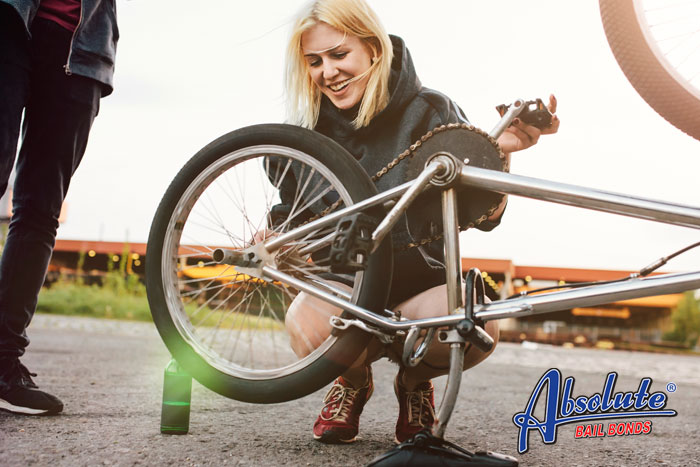
Riding Your Bike Under the Influence of Drugs or Alcohol
The rising fuel costs are causing many of us to take a second look at our bikes. Now they not only seem like a pleasant way to stay in shape but also a viable way to ease transportation costs. Not only can you use your bike to get from your home to your workplace, but you can also use it to go out at night. Not paying for gas means you’ll have more money in your pocket for drinks, and since you’re cycling rather than driving you don’t have to worry about watching how much you drink.
California law prohibits you from driving and cycling while under the influence of drugs and alcohol.
California is so serious about making sure that you don’t bike while under the influence that they created an entire law that deals with anyone who is under the influence when they mount their bike.
The law is California Vehicle Code 21200.5 VC and it states that:
“Notwithstanding Section 21200, it is unlawful for any person to ride a bicycle upon a highway while under the influence of an alcoholic beverage or any drug, or under the combined influence of an alcoholic beverage and any drug. Any person arrested for a violation of this section may request to have a chemical test made of the person’s blood, breath, or urine for the purpose of determining the alcoholic or drug content of that person’s blood pursuant to Section 23612, and, if so requested, the arresting officer shall have the test performed.”
The good news is that while the law prohibits you from cycling while under the influence (CUI) the fallout from doing so is nowhere near as life-altering as getting a DUI.
When you’re charged with a CUI you will only face misdemeanor charges. If you’re convicted of CUI in California you won’t spend any time in jail and the maximum fine you’ll face is $250.
While the potential fallout from a CUI isn’t as severe as what you’d get if you were convicted of a DUI, that doesn’t mean you shouldn’t take the situation seriously. The first issue is that you will have a criminal record that shows an alcohol-related offense.
The second thing to consider is that if you’re cycling under the influence and accidentally hurt someone you will face additional legal and civil penalties that could have a long-term negative impact on your life.
While it’s okay to go out and have a good time, when all is said and done, it’s better to have a designated driver than to cycle home after an evening of fun and drinks.
